|
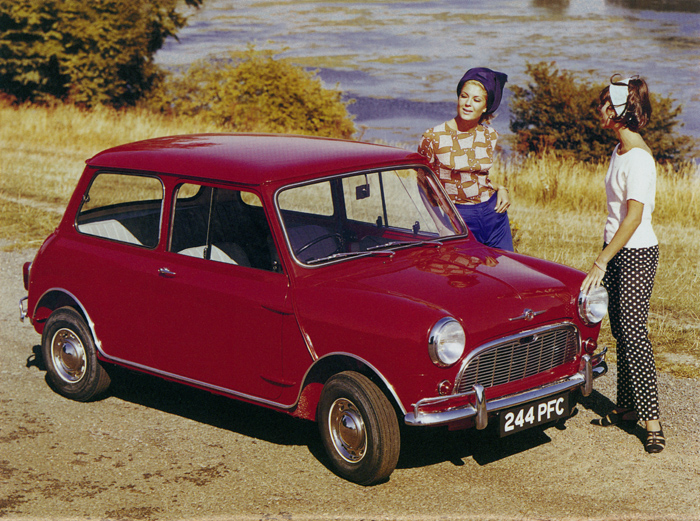
Calendar sheet of January: 1962 Morris Mini Super
7.The Revolutionary with the Drawing Pad. Sir Alec Issigonis, the Father of the Classic Mini.
He had already been successful with his own sports cars and he had been commissioned on a number of
occasions to develop large saloons. But his favourite project, as Alec Issigonis made it quite clear, was the construction of a simple, extremely functional and very affordable small car.
So when Issigonis, the Deputy Technical Director of the Austin Plant in Longbridge, was requested in late 1965 by Leonard Lord, the Chairman of British Motor Corporation (BMC), to develop a brand-new and truly
innovative car, he was absolutely thrilled and knew exactly what he wanted.
The new car was to be smaller than all models built by BMC so far, but nevertheless offer sufficient space for
four occupants and their luggage. A four-cylinder already built by the company was to provide the necessary power, while the driving characteristics and the all-round economy of the new small car were to set new standards.
Considering this brief and the demanding requirements to be fulfilled, what Issigonis needed was no more and no less than an absolutely revolutionary new design – exactly the right job for him and his team.
Back then Alec Issigonis was 51 years old, a seasoned constructor and automotive engineer with an unconventional career and an exceptional approach to his work. At the time his contemporaries described him
as an almost pedantic tinkerer and a passionate technician simply bursting with enthusiasm.
Issigonis did not always do his designs on the drawing board in the construction office, but rather opted for
paper napkins or the little drawing pad he always kept handy to present his ideas to his colleagues and staff members during lunch.
Mathematics he regarded as the "enemy of every creative human being", and with his wealth of ideas, his enthusiasm and his distaste for compromises he pushed his team forward to top performance time and again.
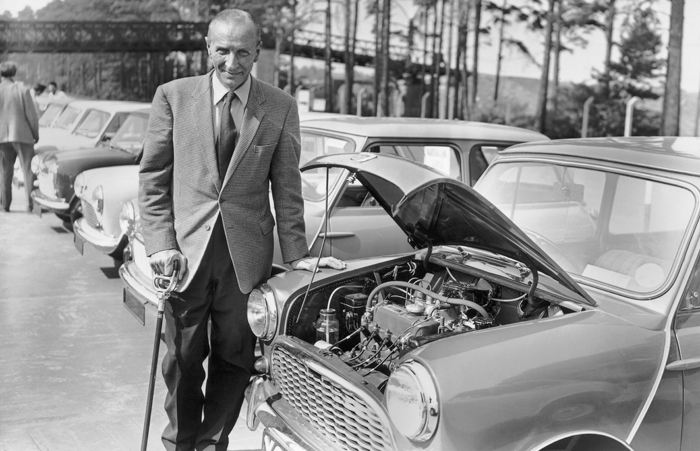
Alec Issigonis with an Austin Seven at the Mini's press launch
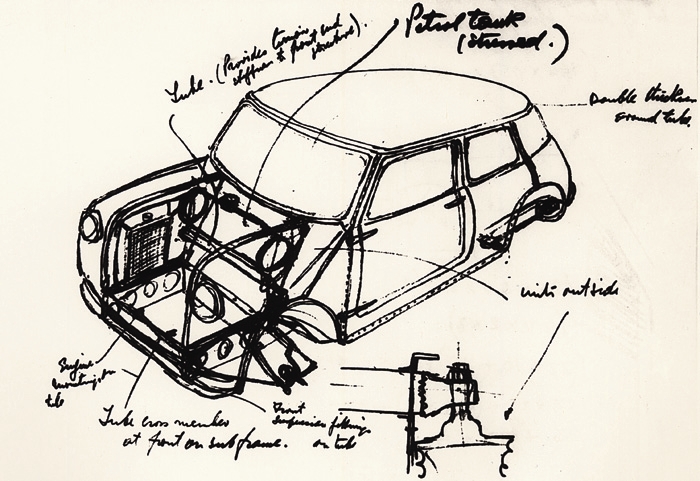
Prototype Mini project drawing by Alec Issigonis, 1958
After just seven months: test drive in the prototype Mini.
Opting for front-wheel drive and the engine fitted crosswise at the front with the gearbox directly below,
Issigonis right from the start created ideal conditions for excellent efficiency in the use of space. No less than 80 per cent of the space taken up by the Mini, what one might call the car's "footprint" on the road,
was exclusively for the passengers and their luggage.
Overall length of the new car was 3.05 metres or 120.0", and the Mini might indeed have been even shorter.
But Issigonis had exact ideas and intentions, which he presented to his team in a rather unusual manner: He had them cut through a model of the Mini right down the middle, then moving the two halves apart
centimetre by centimetre. And when he finally cried out "stop!", the Mini had reached its ideal length.
Just seven months after the official go-ahead, two prototypes of the new small car were ready to go. So
Issigonis invited his boss Leonard Lord to a test drive he still recalled full of amusement years later: "We drove round the Plant, and I was really going like hell. I'm certain he was scared, but he was very impressed
by the car's roadholding. So when we stopped outside his office, he got out and simply said: 'All right, build this car.' "
From this moment on the ongoing development of the Mini in becoming a genuine legend was unstoppable. And Issigonis had secured his position on the podium as one of the world's most ingenious and influential
automobile constructors. The master himself was a bit more reserved, making it quite clear that "I didn't invent the Mini, I built it."
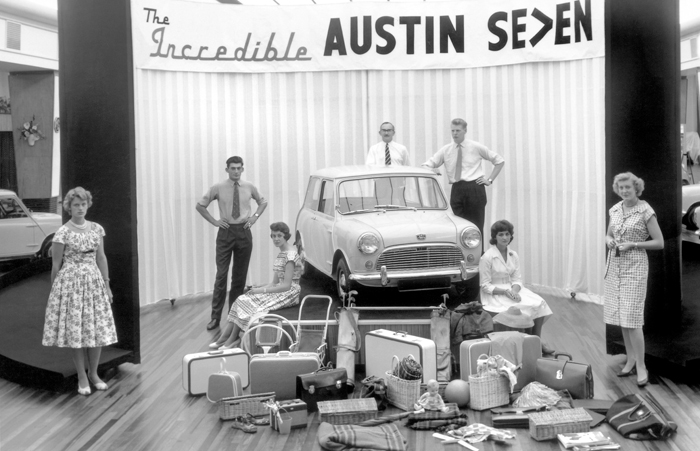
The original Mini launch promotion.
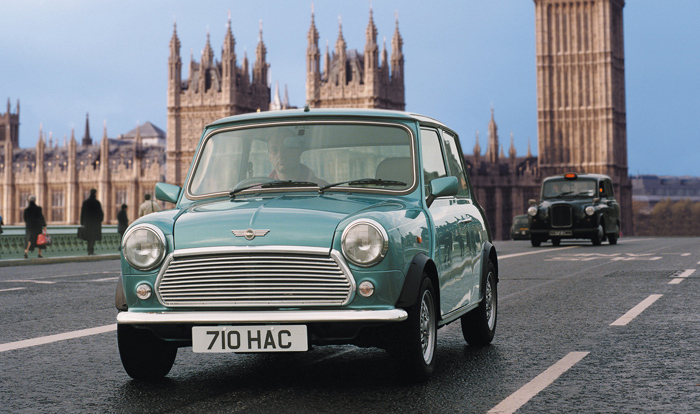
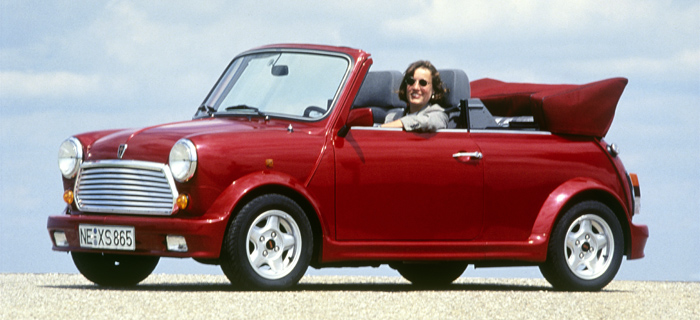
Mini Convertible
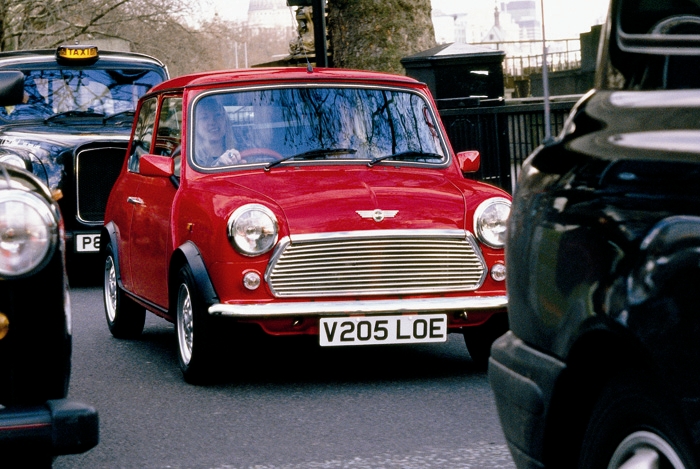
Mini Seven: One of four final edition models for Classic Mini
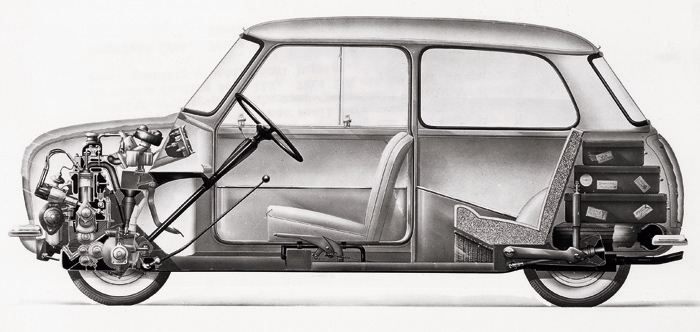
Austin Seven / Morris Mini-Minor longitudinal section, 1959
Alec Issigonis: straight from a family thrilled by technology.
Alexander Arnold Constantine Issigonis was born in the Turkish town of Smyrna, today's Izmir, as the son of a
Briton of Greek origin and a mother from Bavaria, on 18 November 1906. He inherited his great interest in technology and machines from his father who, shortly after the turn of the century, ran a company for
marine engine technology.
In 1922 the family was forced to flee to Malta when the Turkish state was established in very hectic turmoil.
His father died on the island and his mother took him to England where, two years later, young Alec was finally able to drive his first car: a Weymann-bodied Singer in which he chauffeured his mother through
Europe in 1925 in a "never-ending series of breakdowns", as Issigonis recalled later. But it was precisely this unforgettable experience which, immediately upon returning back home, encouraged him to start a
three-year course in mechanical engineering at Battersea Polytechnic in London.
Issigonis' great talent for craftsmanship and his passion for designing and drawing new technical concepts
proved barely sufficient at the time to set off his strong distaste of mathematical theory. So he just about managed his final exam, but did not qualify for ongoing studies at the college in Battersea.
His obvious conclusion was to enter professional life as a technical draughtsman and salesman in a design office for automotive technology in London. Buying an Austin Seven from his first salary, he prepared the car
for racing and entered his first event in March 1929. In the years to follow Issigonis developed his own monoposto in his spare time with design and construction features destined to later make him famous: the
Lightweight Special was absolutely tiny, extremely light, but technically progressive – and successful.
In 1934 Issigonis joined the design and construction team of Humber Ltd., the Coventry-based car maker,
where he worked on the introduction of independent suspension. He proved so good at the job that Morris Motors recruited him themselves just two years later on account of his skill in suspension development.
During the war Issigonis had no choice but to work on various military vehicles, which he nevertheless used as "guinea pigs" for technical innovations.
In 1941 Morris launched the Mosquito Project, a compact four-seater for the post-war era. And indeed, despite the most challenging conditions, Issigonis, reputed to be an all-out workaholic, and his the team had
the first road-going prototype ready within three years. Precisely this model introduced as the Morris Minor in 1948 became the most successful car built by the brand in the post-war years.
When Morris and Austin Motor Company merged four years later to form British Motor Corporation, Issigonis no longer saw any perspectives for his creativity in future. So he started working for Alvis, with the intention
to develop a luxury saloon. But with the project ultimately failing for financial reasons, BMC took Issigonis on again in 1955 as their Deputy Technical Director at the Austin Plant in Longbridge. Here Issigonis was to
develop a number of new model series for the small, medium-sized and upmarket segments to secure the future of what was then Europe's largest car maker.
Since particularly the small car project was acknowledged as very urgent due to the Suez Crisis, the new model made its debut in 1959 as the Morris Mini-Minor and the Austin Seven. Large models only came later,
with the four-door Morris 1100 midrange model entering the market three years later and the very spacious Austin 1800 in 1964.
Career and knighthood: honoured for his lifetime achievement.
The success of the classic Mini also gave worldwide fame to the car's "father". In 1961 Alec Issgonis, in his
position as Technical Director, became a Board Member of Austin Motor Company, and two years later he was appointed to the Board of BMC.
In 1967 he became a member of the Royal Society, the most renowned research society in Britain, and two years later the Queen knighted the father of the Mini.
Sir Alec Issigonis retired in 1971, but remained an advisor to the company until 1987. One year later he died on 2 October, shortly before his 82nd birthday.
To this day this outstanding automotive engineer and constructor lives on in countless memories. And the market launch of the second generation of the Mini was indeed held exactly on 18 November 2006, the 100th
birthday of the father of the classic Mini, in the honour of this great man.
|




